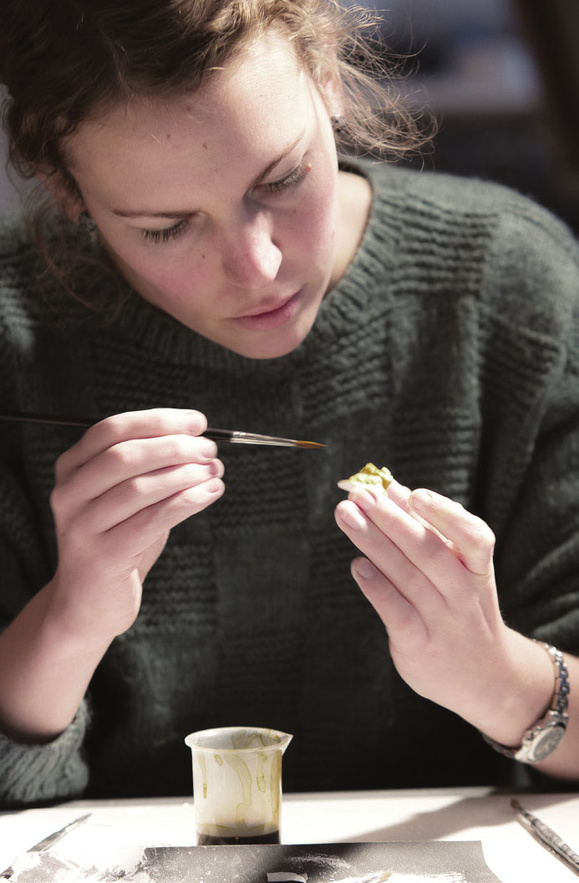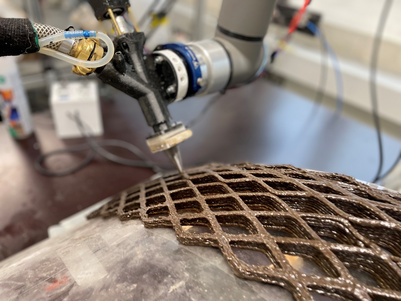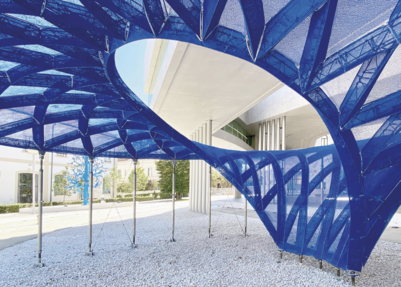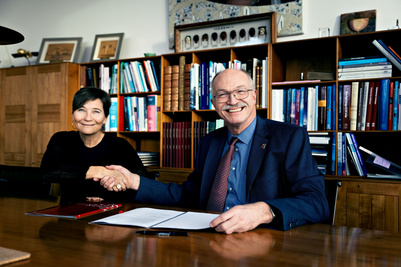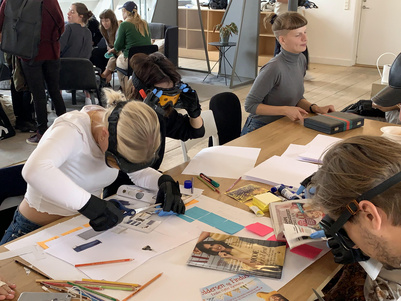How did you find out that you wanted to be a conservator?
My route to conservation was via art. I had studied art history and attended an art school where I worked with various art techniques. But I was also interested in the scientific and technical side; I wanted to learn more about the materials and techniques behind the art, and about the genesis and construction of artworks. So it was probably my interest in the material aspects of art that led me to become a conservator.
What was your graduation project about?
I have been studying a conservation method known as lamination. This involves placing an extra support canvas behind the painting’s original canvas if it is weakened. A support canvas can be more or less sensitive to humidity, and it is preferable to use a material that as insensitive as possible to humidity. It is particularly important to use non-sensitive materials if the painting is hung in a place where it is difficult to control the humidity in the air, which is typically the case in historic buildings that function as museums, such as Rosenborg Castle.
For my graduation project I tested various laminating materials at Rosenborg Castle. I also researched the rigidity of these materials as this is also critical to the preservation of paintings.
What is the most difficult thing about working with conservation…and what is the most enjoyable?
I think that it is both fun and fascinating to be able to work so closely with works of art. You sense the presence of history and feel respect for both the art and the artist when you can see how a work of art is put together and how much expertise underpins it. The variable nature of the work is also fun – you encounter different problems from work to work.
Perhaps one of the most difficult, yet also extremely interesting, problems relates to the conservation of contemporary art or ethnographic objects. In these cases, it might not be the materials that are the most important feature to preserve, but rather the ideas that are conveyed by the objects. An artwork might accommodate a number of values worthy of preservation, and it is necessary to carry out a great deal of research in order to work out the best way to preserve a specific work of art.
What is your greatest strength as a graduate conservator from KADK?
As recently-qualified conservator from KADK I have both a theoretical and practical understanding of preservation and conservation. As a conservator you acquire considerable knowledge about materials and analytical methods, which can also be highly relevant for art historians, not least when art is disseminated to the viewing public.
What do you see yourself doing in five years?
I hope that in five years I will have undertaken a lot of exciting assignments and built up a considerable store of practical knowledge. If all goes to plan, I will be working with painting conservation at a museum where I will have the opportunity to delve deeply into some interesting problems or to research artworks, and to disseminate the results.


